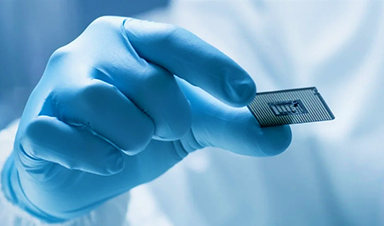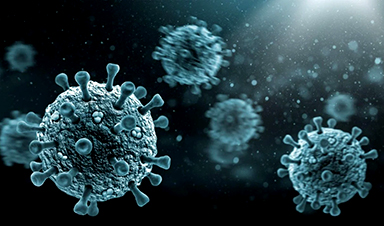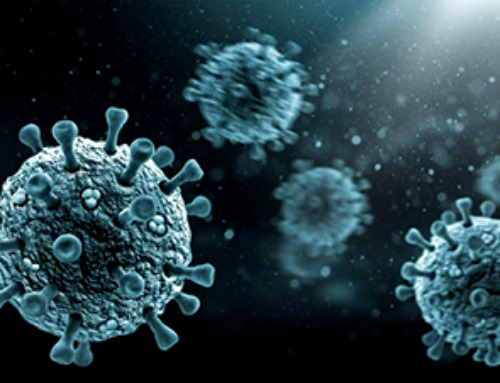New raw vaccine materials that could make vaccines more accessible, sustainable, and ethical have been discovered. The results of the research have been published in Polymers.
Researchers at the University of Nottingham collaborated with the Access to Advanced Health Institute (AAHI) to identify synthetic alternatives to squalene that ensure sustainable, reliable, and ethical sourcing of adjuvant raw materials for vaccines moving forward.
New synthetic adjuvant materials were developed from commercially available methacrylate monomers, ensuring that a reliable supply of the material is continually available.
The combination of these adjuvant materials are scalable through catalytic chain transfer polymerization, a process that allows high levels of control over the molecular weight of the product polymer. Controlling the molecular weight is key to the use of adjuvant material in formulations for vaccines as it allows for purification in the manufacturing process and optimizes biological responses following immunization.
Professor Derek Irvine, professor of materials chemistry in the University of Nottingham’s Faculty of Engineering, said, “At the moment, there are very few adjuvants approved for commercial use, so the need to find a squalene alternative is of vital importance to ensure greater access to vaccines worldwide.
“Our research has found that squalene emulsions were physically stable for less than three months at 40 degrees centigrade. Whereas our synthetic adjuvant materials produced emulsions that remained physically stable for up to 18 months at the same temperature and caused an innate immune response when tested with human cells. This could be hugely significant when it comes to increasing accessibility in developing areas of the world that don’t have ready or consistent access to the fridges or cold storage required for existing vaccines.”
The university’s Faculty of Engineering worked alongside the School of Chemistry to synthesize and design the adjuvant materials. These were then sent to AAHI, where they were formulated as emulsions, tested for potential toxicity and innate immune stimulation using in vitro bioassays, and assessed for physical stability.
“Identifying sustainably sourced adjuvant materials enables the development of vaccine formulations without relying on sharks and may provide additional benefits such as enhanced stability,” says Dr. Christopher Fox, senior vice president of formulations at AAHI.
The team is now looking at more comprehensive evaluation of vaccine-specific immune responses to the new materials, as well as how the material production process can be scaled up.
More information: Cordula S. Hege et al, Screening of Oligomeric (Meth)acrylate Vaccine Adjuvants Synthesized via Catalytic Chain Transfer Polymerization, Polymers (2023). DOI: 10.3390/polym15183831
News
Enhanced Antibacterial Polylactic Acid-Curcumin Nanofibers for Wound Dressing
Background Wound healing is a complex physiological process that can be compromised by infection and impaired tissue regeneration. Conventional dressings, typically made from natural fibers such as cotton or linen, offer limited functionality. Nanofiber [...]
Global Nanomaterial Regulation: A Country-by-Country Comparison
Nanomaterials are materials with at least one dimension smaller than 100 nanometres (about 100,000 times thinner than a human hair). Because of their tiny size, they have unique properties that can be useful in [...]
Pandemic Potential: Scientists Discover 3 Hotspots of Deadly Emerging Disease in the US
Virginia Tech researchers discovered six new rodent carriers of hantavirus and identified U.S. hotspots, highlighting the virus’s adaptability and the impact of climate and ecology on its spread. Hantavirus recently drew public attention following reports [...]
Studies detail high rates of long COVID among healthcare, dental workers
Researchers have estimated approximately 8% of Americas have ever experienced long COVID, or lasting symptoms, following an acute COVID-19 infection. Now two recent international studies suggest that the percentage is much higher among healthcare workers [...]
Melting Arctic Ice May Unleash Ancient Deadly Diseases, Scientists Warn
Melting Arctic ice increases human and animal interactions, raising the risk of infectious disease spread. Researchers urge early intervention and surveillance. Climate change is opening new pathways for the spread of infectious diseases such [...]
Scientists May Have Found a Secret Weapon To Stop Pancreatic Cancer Before It Starts
Researchers at Cold Spring Harbor Laboratory have found that blocking the FGFR2 and EGFR genes can stop early-stage pancreatic cancer from progressing, offering a promising path toward prevention. Pancreatic cancer is expected to become [...]
Breakthrough Drug Restores Vision: Researchers Successfully Reverse Retinal Damage
Blocking the PROX1 protein allowed KAIST researchers to regenerate damaged retinas and restore vision in mice. Vision is one of the most important human senses, yet more than 300 million people around the world are at [...]
Differentiating cancerous and healthy cells through motion analysis
Researchers from Tokyo Metropolitan University have found that the motion of unlabeled cells can be used to tell whether they are cancerous or healthy. They observed malignant fibrosarcoma [...]
This Tiny Cellular Gate Could Be the Key to Curing Cancer – And Regrowing Hair
After more than five decades of mystery, scientists have finally unveiled the detailed structure and function of a long-theorized molecular machine in our mitochondria — the mitochondrial pyruvate carrier. This microscopic gatekeeper controls how [...]
Unlocking Vision’s Secrets: Researchers Reveal 3D Structure of Key Eye Protein
Researchers have uncovered the 3D structure of RBP3, a key protein in vision, revealing how it transports retinoids and fatty acids and how its dysfunction may lead to retinal diseases. Proteins play a critical [...]
5 Key Facts About Nanoplastics and How They Affect the Human Body
Nanoplastics are typically defined as plastic particles smaller than 1000 nanometers. These particles are increasingly being detected in human tissues: they can bypass biological barriers, accumulate in organs, and may influence health in ways [...]
Measles Is Back: Doctors Warn of Dangerous Surge Across the U.S.
Parents are encouraged to contact their pediatrician if their child has been exposed to measles or is showing symptoms. Pediatric infectious disease experts are emphasizing the critical importance of measles vaccination, as the highly [...]
AI at the Speed of Light: How Silicon Photonics Are Reinventing Hardware
A cutting-edge AI acceleration platform powered by light rather than electricity could revolutionize how AI is trained and deployed. Using photonic integrated circuits made from advanced III-V semiconductors, researchers have developed a system that vastly [...]
A Grain of Brain, 523 Million Synapses, Most Complicated Neuroscience Experiment Ever Attempted
A team of over 150 scientists has achieved what once seemed impossible: a complete wiring and activity map of a tiny section of a mammalian brain. This feat, part of the MICrONS Project, rivals [...]
The Secret “Radar” Bacteria Use To Outsmart Their Enemies
A chemical radar allows bacteria to sense and eliminate predators. Investigating how microorganisms communicate deepens our understanding of the complex ecological interactions that shape our environment is an area of key focus for the [...]
Psychologists explore ethical issues associated with human-AI relationships
It's becoming increasingly commonplace for people to develop intimate, long-term relationships with artificial intelligence (AI) technologies. At their extreme, people have "married" their AI companions in non-legally binding ceremonies, and at least two people [...]





















